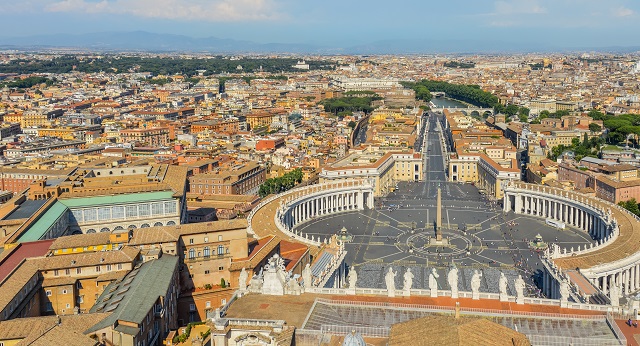
Whether you’re researching for a school assignment or to help define your dream home to a local architect, there’s a lot to learn about these overlapping architectural styles. Let’s start with a quick summary of the basics.
What was the Renaissance?
Most historians place the Renaissance period between the 14th and 17th centuries, a period in European history that was characterized by a rebirth along economic, political, and artistic lines. During the Renaissance, people were focused on rediscovering classic art, literature, and philosophy. Artists and scientists of the day led the way toward exciting new advances.
What was the Baroque period?
The Baroque period arrived on the tail of the Renaissance period, spanning from 1600 to 1750. During this time in Europe, art took on a distinctly elaborate look and feel characterized by ample ornamentation. Architecture, literature, music, dance, painting, and sculpture produced during the Baroque period was exaggerated and dramatic.
Renaissance Architecture
Architects working during the Renaissance used buildings from ancient Greece and Rome as their inspiration. Renaissance architecture featured majestic domes that required massive amounts of material to construct.
Building processes during the Renaissance period required new techniques because lifting these materials up to the high points of the buildings was challenging.
Common features of Renaissance buildings included:
- square and rectangular shapes
- cylindrical towers
- Roman columns
- arches
- flat ceilings
Notable Renaissance buildings include:
- the Sistine Chapel, with its ceiling painted by Michelangelo*
- the Basilica of St. Peter*
- Palazzo Pitti
- Holyrood Palace
- Trakai Island Castle
- Château de Chenonceau
*These are also claimed examples of Baroque period design.
Renaissance Homes
Typical homes in the Renaissance period were small and made from wood or stone for those in the lower classes. A thatched roof and rectangular windows were common, and shutters made of wood were pulled over the windows to close them. Most homes had only two rooms, with a fire in the center for warmth and cooking.
Upper-class people of this period only made up about five percent of the total population. Those in the upper classes had large homes and massive gardens. They also had many servants in their employ who would maintain both the interior and the exterior areas of their homes and property. Furnishings were handcrafted and tasteful, and decor featured sculptures, paintings, and glass mirrors. Lighting in homes tended to be dim. It was typical for wealthy people to collect tapestries and paintings which they would display in their homes.
Baroque Architecture

The St. James Cathedral in Santiago de Compostela, Spain. Completed with additions in the 18th century.
During the Baroque period, architecture advanced from Renaissance styles to bring building features to new heights of intensity and drama. The Catholic Church was the driving force behind the Baroque period.
Different countries had vastly differing Baroque styles, with features found in Italy being much different from art forms in France and England. This and overlapping styles at the time make Baroque style hard to clearly distinguish from Romanesque and Gothic design.
Shared Features of the Baroque style included:
- huge proportions and long, vertical lines
- wide-open spaces
- cupolas allowing the light to enter in dramatic ways
- gilding
- twisted columns
- vaulted ceilings
- arches
- intricate outlining details
Often, sculptures of angels would be placed near the ceilings, and painted details graced the walls and ceilings. Trompe l’oeil was a common artistic painting technique that created the illusion of three dimensions on flat surfaces.
Notable Baroque buildings include:
- the Church of San Carlo alle Quattro Fontane in Rome, a Roman Catholic church that was constructed between 1638 and 1646
- Les Invalides in Paris, which was constructed to be a hospital and retirement home for veterans. Today, it is a museum as well as the final resting place of Napoleon Bonaparte.
- Cathedral of Santiago de Compostela
- Catedral Metropolitana
- São Francisco de Assis Church
- Mafra National Palace
Baroque Homes
Economic classes were very rigidly defined during the Baroque period. Those in the upper class lived in opulence, while those in the lower classes often lived in harsh and difficult conditions.
Wealth was expressed in the architectural elements of their homes, adding as much drama and intensity as possible with both interior and exterior features. Staircases were grand and sweeping, ceilings were vaulted, and painting and sculptural additions were common. The architecture featured as much color and as many ornamental features as possible.
Life for the lower classes involved living in small houses built closely together on narrow streets. Sanitation was an issue, and health was consequently poor.
Want to learn more? Check out these references:
- How to Add Baroque Style to Any Interior
- Art and Music in the Baroque Period
- Interior Design in England, 1600-1800
- Architecture of the Baroque Period
- Baroque Architecture: Definition, History, and Characteristics
- Interior Design Styles
- About the Baroque Period
- Renaissance History
- The Renaissance Period: Facts, Information, Worksheets, Culture and Arts

 Engineering the Future: The Educator’s Guide to Building and Construction
Engineering the Future: The Educator’s Guide to Building and Construction  Soil Engineers & Testing
Soil Engineers & Testing  Finding & Hiring a Draftsperson: What They Do, Questions to Ask
Finding & Hiring a Draftsperson: What They Do, Questions to Ask  Remodeling? Why You Need a Residential Designer
Remodeling? Why You Need a Residential Designer  Drafting Specialties
Drafting Specialties 

Are You Familiar With This Topic? Share Your Experience.